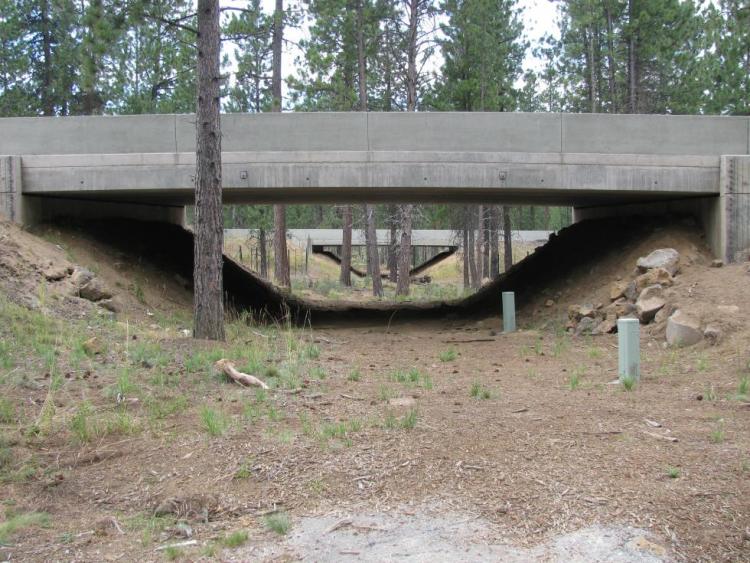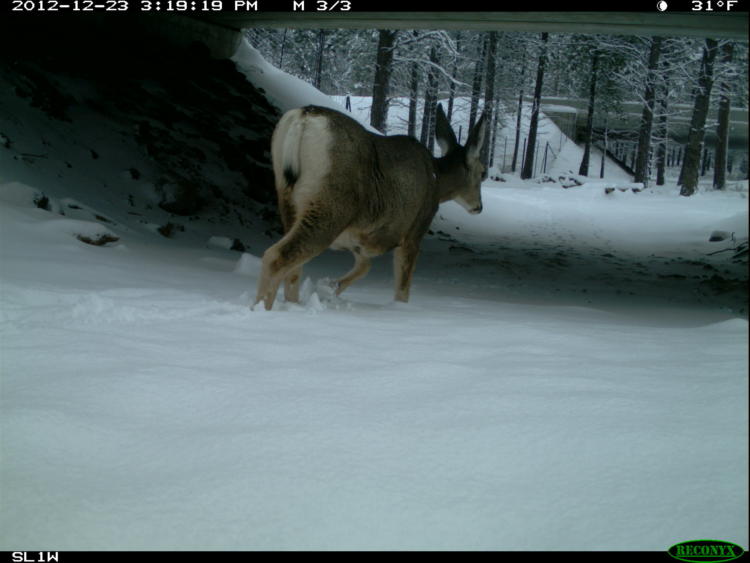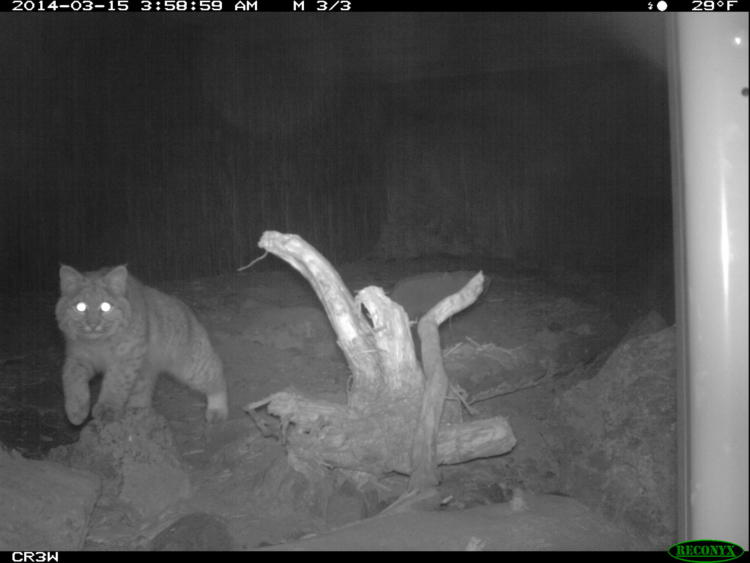
In June 2012, the Oregon Department of Transportation (ODOT) completed an $18.9 million project on 3.7 miles of U.S. Route 97 between Lava Butte and South Century Drive, a few miles south of Bend in Central Oregon. The project’s primary purpose was to increase highway capacity for growing traffic volume between Sunriver and Bend by expanding the single north/south travel lanes to two lanes in each direction.
When plans for the highway upgrade began to take shape in 2005, it was soon recognized that widening the highway would significantly impact wildlife movement. This included thousands of mule deer that move seasonally from the Cascade Mountains west of U.S. 97 to sagebrush flats and pine/juniper forests east of U.S. 97 and back again. There is insufficient forage to support the mule deer herd year-round on either side of the highway, so the bi-annual migration across U.S. 97 is biologically necessary.
ODFW, the United States Forest Service (USFS), and ODOT worked together to tackle this problem. The group designed a suite of wildlife passage structures to provide safe highway crossings for mule deer and other wildlife.
These structures include one underpass designed for wildlife use only, and one underpass for both wildlife use and for vehicles driving between the USFS Lava Lands Visitors Center west of the highway to the Lava River Cave on the east side.
Fences were built paralleling the highway that funnel animals to the underpasses. For those animals finding themselves on the wrong (highway) side of the fence, structures called “jumpouts” enable them to get back behind the right (safe) side of the fence. Electric solar-powered mats were installed across all roads that access U.S. 97 within the project area. These access points are essentially holes in the fence, but the low voltage mats quite effectively keep deer and other wildlife away from the U.S. 97 and on the safe side of the fence.
Monitoring of the completed structures began in 2013. Within the first year, 29 species ranging from deer and elk to bobcat, badger, and squirrels were documented using the underpasses, and deer/vehicle collisions were reduced by more than 90 percent. This is an obvious win for both wildlife and the traveling public.
Addressing the wildlife passage problem within the highway expansion area involved a substantial upfront investment of tax dollars. However, considering the project’s success in reducing deer/vehicle collisions, the average cost of a single deer/vehicle collision in the U.S. ($6,633 in 2012), and that the structures will provide benefits for 50 to 75 years, it made good economic sense to address wildlife. The upfront costs are expected to be recouped in 10 to 12 years, and from that point on, the project will continue in the green for decades to come.
The enhanced ability of wildlife to move across the highway barrier is a great biological return on investment. Protecting and/or enhancing the ability of wildlife to move across the landscape is critical for healthy and vibrant ecosystems.

